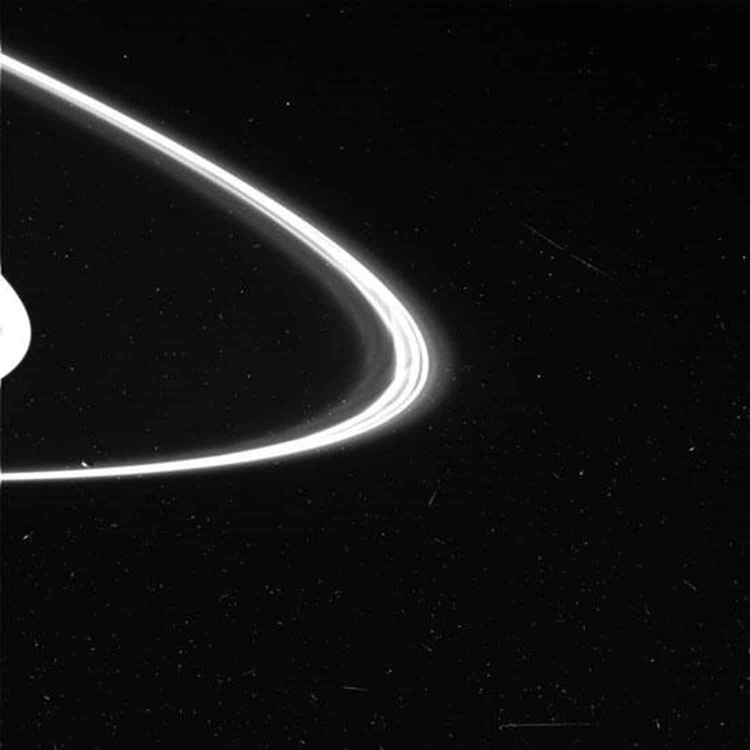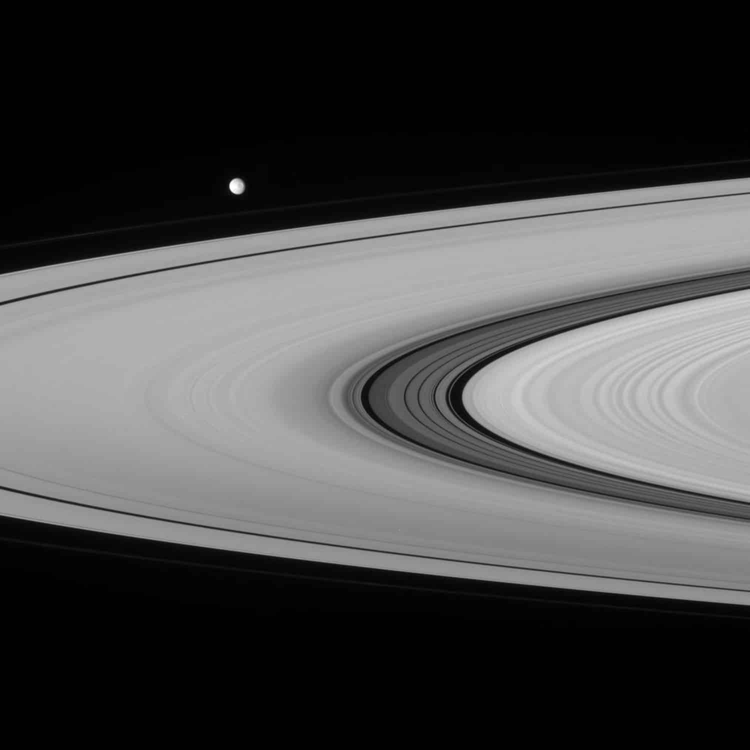Saturn's rings are likely much older than scientists previously thought.
The rings of Saturn are bright enough to be visible from Earth. The reason for this is their composition: they consist of 90-95 percent water ice, which has a high reflectivity (albedo). This ice varies in size, ranging from tiny ice particles to chunks several meters in diameter. Additionally, the rings contain various impurities such as dust and rocks, likely formed from the destruction of one or more comets, asteroids, or moons that broke apart under the gravitational influence of the gas giant.
For most of the 20th century, scientists believed that Saturn's rings formed alongside the planet approximately 4.5 billion years ago. However, when the Cassini probe approached the gas giant, researchers began to question this estimate. Before concluding its mission in 2017, the spacecraft provided astronomers with the most accurate data on the structure and physical properties of the rings, which enabled researchers to calculate their age.
Experts believe that if Saturn's rings had existed for billions of years as previously thought, they would have accumulated a significantly larger amount of dust. However, analysis revealed that the rings contain much less dust than expected. This suggests that they are much younger, possibly forming only 10 to 100 million years ago, roughly contemporaneous with the extinction of the dinosaurs.

The age was estimated based on the rate of darkening of the ice: knowing that the rings initially consist of pure ice, and calculating the meteoroid influx toward Saturn, one can infer the estimated time for the accumulation of impurities. Over time, the ice should have darkened due to the accumulation of cosmic dust, but the rings remain remarkably bright, indicating their "youth."
In 2023, researchers refined the age of Saturn's rings. They analyzed how quickly cosmic dust contaminates the ring particles—settling on the water ice. The researchers concluded that the rings are between 100 and 400 million years old.
Now, a group of astronomers from France and Japan, led by Ryuki Hyodo (Ryuki Hyodo) from the Institute of Space and Astronautical Science, has refuted these findings. The team calculated that Saturn's rings should be much more resistant to contamination by cosmic dust than previously thought, allowing the water ice in their composition to remain "clean" for a long time. Hyodo and his colleagues did not calculate a new age for the rings but proposed that they are as old as Saturn itself, roughly 4.5 billion years. They shared their discovery in a paper published in the journal Nature.
Initially, the researchers modeled how cosmic dust, accelerated by Saturn's gravity, crashes into the rings at high speeds. The analysis revealed that such collisions would generate extreme temperatures that could vaporize the dust. This results in vapor forming a cloud, which then cools and condenses, turning into charged particles. These particles resemble those observed by the Cassini probe.
Then, Hyodo's team modeled how these particles would move through Saturn's magnetic field and found that only a small portion would begin to settle on the rings, while the majority would either be pulled into Saturn's atmosphere or return to space due to the gas giant's gravity.

The authors of the new scientific work noted that Saturn's rings appear "young" due to their ability to "resist" contamination, allowing their original appearance to be preserved for much longer. According to the scientists, this factor may affect how researchers assess the age of the rings.
Astronomers who estimated the age of Saturn's rings to be several hundred million years have already reacted to the new study. Experts pointed out that they used a more complex method in their work than Hyodo's group, and their conclusions are much more practical, based on data sent by the Cassini spacecraft.
"In the modeling conducted by Hyodo's team, it is assumed that Saturn's rings consist solely of solid ice particles, whereas they actually consist of softer structures that have lower hardness and greater pliability compared to solid particles. This means that such 'soft' particles can break apart, deform, or stick together upon collision, creating more complex and dynamic interactions than solid ice crystals. Therefore, the results of the studies will be quite different," explained American astronomer Sascha Kempf (Sascha Kempf) from the University of Colorado Boulder, one of the authors of the 2023 study on the age of Saturn's rings.